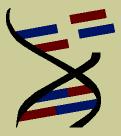
Genome Project Solutions
The
First Genome Sequence of a Crustacean Has Extreme Features
(continued from here)
Hercules, California — To speak with senior author of
this manuscript, Jeffrey L. Boore, please call 877-867-0146 or e-mail
JLBoore@GenomeProjectSolutions.com.
Colbourne, J.K., M.E. Pfrender, D. Gilbert, W.K. Thomas, A. Tucker, T.H.
Oakley, S. Tokishita, A. Aerts, G.J. Arnold, M. Kumar Basu, D.J. Bauer,
C.E. Cáceres, L. Carmel, C. Casola, J.-H. Choi, C. Detter, Q. Dong,
S. Dusheyko, B.D. Eads, T. Fröhlich, K.A. Geiler-Samerotte, D. Gerlach,
P. Hatcher, S. Jogdeo, J. Krijgsveld, E.V. Kriventseva, D. Kültz,
C. Laforsch, E. Lindquist, J. Lopez, J.R. Manak, J. Muller, J. Pangilinan,
R.P. Patwardhan, S. Pitluck, E.J. Pritham, A. Rechtsteiner, M. Rho, I.B.
Rogozin, O. Sakarya, A. Salamov, S. Schaack, H. Shapiro, Y. Shiga, C.
Skalitzky, Z. Smith, A. Souvorov, W. Sung, Z. Tang, D. Tsuchiya, H. Tu,
H. Vos, M. Wang, Y.I. Wolf, H. Yamagata, T. Yamada, Y. Ye, J.R. Shaw,
J. Andrews, T.J. Crease, H. Tang, S.M. Lucas, H.M. Robertson, P. Bork,
E.V. Koonin, E.M. Zdobnov, I. Grigoriev, M. Lynch and J.L. Boore. 2011.
The Ecoresponsive Genome of Daphnia pulex. Science 331,
555-561.
This
work received financial and material support from the Office of Science
of the U.S. Department of Energy, the National Science Foundation, the
Lilly Endowment, Inc., Roche NimbleGen Inc., the National Institutes of
Health, the U.S. Department of Health and Human Services, and Indiana
University.
Major Findings of this work:
• This is the first crustacean genome sequenced.
•
Daphnia has the largest inventory of genes ever recorded for a
sequenced animal, packaged within a tiny genome of only 200 million bases.
• The genome is made compact by the reduction in size of
spaces between the gene parts that code for proteins.
• Only
4.5 percent of genes are shared exclusively between Daphnia and
insects, two groups of arthropods that shared a common ancestor some 450
MYA.
• This is the first arthropod with a wholly aquatic life
cycle to have its genome sequenced. Genes shared by Daphnia and
unrelated aquatic vertebrates are identified, and are likely key for living
life in water.
• Genes that have unknown functions - because they are uniquely
identified in Daphnia - are involved in response to the environment.
• Of all sequenced genomes belonging to the animal group
comprised of insects and crustaceans, Daphnia share the greatest
number of genes with humans.
• The birth rates for genes can be high — duplications
occur three times more in Daphnia pulex than in other invertebrates
— and duplicated genes are more likely to be functionally related
than not.
• Newly duplicated genes can rapidly acquire new functions,
which are best identified by specific environmental conditions.
• Daphnia-specific gene families that have amplified
to large numbers include hemoglobins (11 copies), and opsin (visual) genes
(46 copies) — a very old and newly discovered expanded subfamily
of opsins was lost in terrestrial animal lineages.
• The overall data suggest an original hypothesis for how
newly duplicated genes are retained in the genome, which depends on the
condition-specific regulation of cooperatively evolving genes.
BACK to News and Publications
